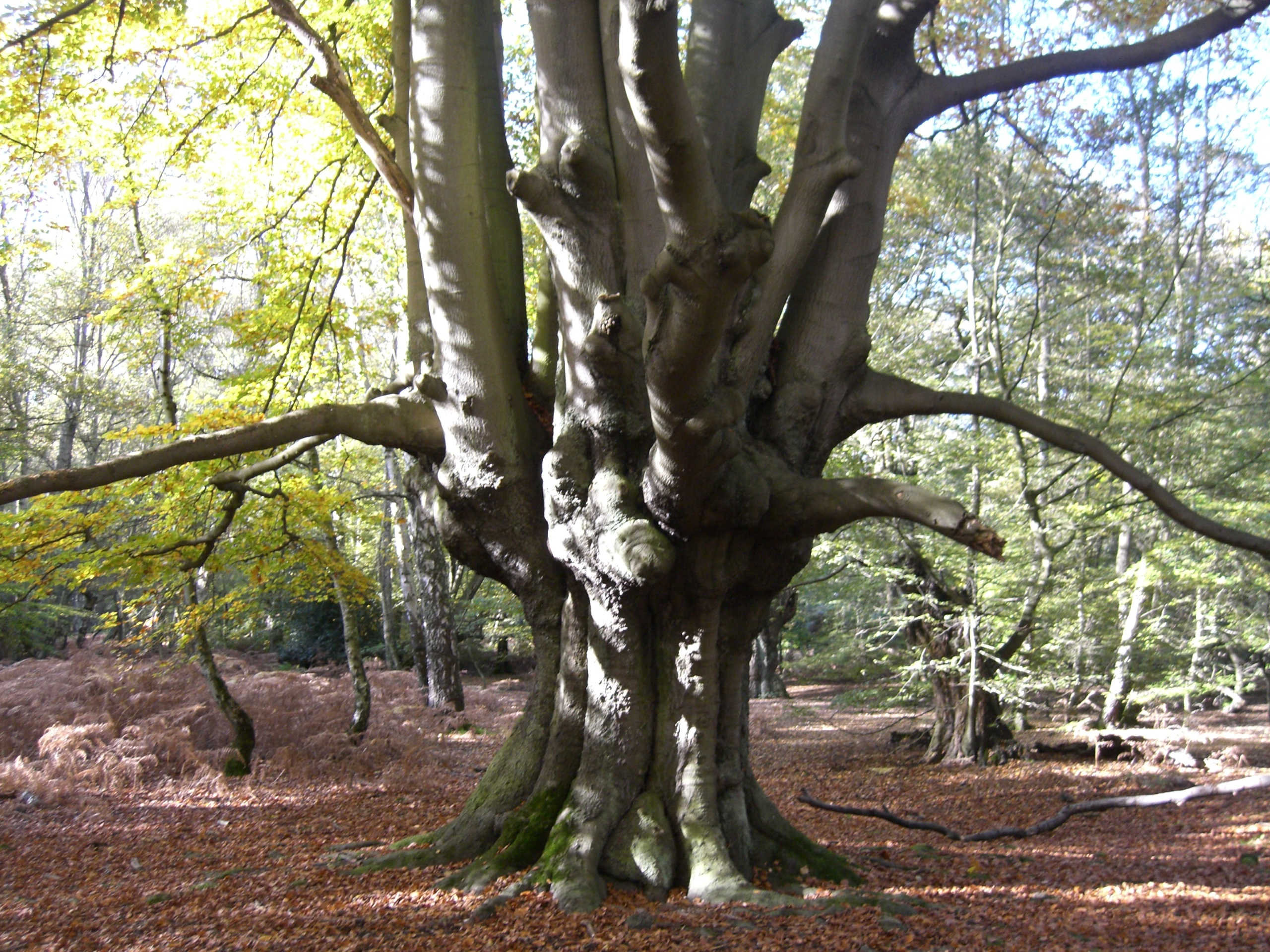|
Shredding (tree-pruning Technique)
Shredding is a traditional European method of tree pruning by which all side branches are removed repeatedly leaving the main trunk and top growth. In the Middle Ages the practice was common throughout Europe, but it is now rare, found mainly in central and Eastern Europe. The purpose of shredding is to allow harvest of firewood and animal fodder while preserving a tall main trunk which may be harvested for timber at a later date. It was formerly practiced in Britain although Oliver Rackham notes that "The medieval practice of shredding – cropping the side-branches of a tree leaving a tuft at the top – vanished from Britain long ago. Only at Haresfield (Gloucestershire) have I seen a few ancient ashes that may once have been shredded". Another name for cutting side branches off trees, used mainly in Northern England, is snagging. Other similar woodland management techniques include pollarding and coppicing Coppicing is the traditional method in woodland management of ... [...More Info...] [...Related Items...] OR: [Wikipedia] [Google] [Baidu] |
Oliver Rackham
Oliver Rackham (17 October 1939 – 12 February 2015) was an academic at the University of Cambridge who studied the ecology, management and development of the British countryside, especially trees, woodlands and wood pasture. His books included ''Ancient Woodland'' (1980) and ''The History of the Countryside'' (1986). Life and academic career Rackham was born in Bungay in Suffolk, and attended Norwich School. In 1958 he won a scholarship to Corpus Christi College, Cambridge, graduating in Natural Sciences in 1961 and subsequently gaining a PhD. He began his academic career studying physics, but moved between several Cambridge departments (where his field notebooks are now digtially archived). He conducted research in the Department of Botany from 1964 to 1968 and 1972 to 1990, and the Plant Breeding Institute of Cambridge from 1968 to 1972. He transferred to the Department of Geography from 1988 to 2000, latterly as Professor, and was appointed Honorary Professor of His ... [...More Info...] [...Related Items...] OR: [Wikipedia] [Google] [Baidu] |
Haresfield
Haresfield is a village near Gloucester, Gloucestershire Gloucestershire ( , ; abbreviated Glos.) is a Ceremonial counties of England, ceremonial county in South West England. It is bordered by Herefordshire to the north-west, Worcestershire to the north, Warwickshire to the north-east, Oxfordshire ..., England around one mile from Junction 12 of the M5 motorway and between the villages of Brookthorpe, Harescombe and Hardwicke. The population of the village taken at the 2011 census was 378. The Mount, a moated site to the west of the current village may have been the site of the earliest settlement. The church was built nearby in the mid-12th century, while the village developed to the east. Haresfield today is a largely residential village with a pub, The Beacon Inn. The church, which is dedicated to St Peter, is apart from the village itself and accessed by a public right of way on a private drive. Haresfield Court (originally Moat Place) was built c.1676 and enla ... [...More Info...] [...Related Items...] OR: [Wikipedia] [Google] [Baidu] |
Pollarding
Pollarding is a pruning system involving the removal of the upper branches of a tree, which promotes the growth of a dense head of foliage and branches. In ancient Rome, Propertius mentioned pollarding during the 1st century BCE. The practice has occurred commonly in Europe since medieval times, and takes place today in urban areas worldwide, primarily to maintain trees at a determined height or to place new shoots out of the reach of grazing animals. Traditionally, people pollarded trees for one of two reasons: for fodder to feed livestock or for wood. Fodder pollards produced "pollard hay" for livestock feed; they were pruned at intervals of two to six years so their leafy material would be most abundant. Wood pollards were pruned at longer intervals of eight to fifteen years, a pruning cycle tending to produce upright poles favored for fencing and boat construction. Supple young willow or hazel branches may be harvested as material for weaving baskets, fences, and garden cons ... [...More Info...] [...Related Items...] OR: [Wikipedia] [Google] [Baidu] |
Coppicing
Coppicing is the traditional method in woodland management of cutting down a tree to a tree stump, stump, which in many species encourages new Shoot (botany), shoots to grow from the stump or roots, thus ultimately regrowing the tree. A forest or grove that has been subject to coppicing is called a copse or coppice, in which young tree stems are repeatedly cut down to near ground level. The resulting living stumps are called Living stump, stools. New growth emerges, and after a number of years, the coppiced trees are harvested, and the cycle begins anew. Pollarding is a similar process carried out at a higher level on the tree in order to prevent grazing animals from eating new shoots. ''Daisugi'' (台杉, where ''sugi'' refers to Japanese cedar) is a similar Japanese technique. Many silviculture practices involve cutting and regrowth; coppicing has been of significance in many parts of lowland temperate Europe. The widespread and long-term practice of coppicing as a landscape ... [...More Info...] [...Related Items...] OR: [Wikipedia] [Google] [Baidu] |
Woodland Management
Forest management is a branch of forestry concerned with overall administrative, legal, economic, and social aspects, as well as scientific and technical aspects, such as silviculture, forest protection, and forest regulation. This includes management for timber, aesthetics, recreation, urban values, water, wildlife, inland and nearshore fisheries, wood products, plant genetic resources, and other forest resource values. Management objectives can be for conservation, utilisation, or a mixture of the two. Techniques include timber extraction, planting and replanting of different species, building and maintenance of roads and pathways through forests, and preventing fire. Many tools like remote sensing, GIS and photogrammetry modelling have been developed to improve forest inventory and management planning. Scientific research plays a crucial role in helping forest management. For example, climate modeling, biodiversity research, carbon sequestration research, GIS applica ... [...More Info...] [...Related Items...] OR: [Wikipedia] [Google] [Baidu] |
Horticulture
Horticulture (from ) is the art and science of growing fruits, vegetables, flowers, trees, shrubs and ornamental plants. Horticulture is commonly associated with the more professional and technical aspects of plant cultivation on a smaller and more controlled scale than agronomy. There are various divisions of horticulture because plants are grown for a variety of purposes. These divisions include, but are not limited to: propagation, arboriculture, landscaping, floriculture and turf maintenance. For each of these, there are various professions, aspects, tools used and associated challenges -- each requiring highly specialized skills and knowledge on the part of the horticulturist. Typically, horticulture is characterized as the ornamental, small-scale and non-industrial cultivation of plants; horticulture is distinct from gardening by its emphasis on scientific methods, plant breeding, and technical cultivation practices, while gardening, even at a professional level, tends ... [...More Info...] [...Related Items...] OR: [Wikipedia] [Google] [Baidu] |



